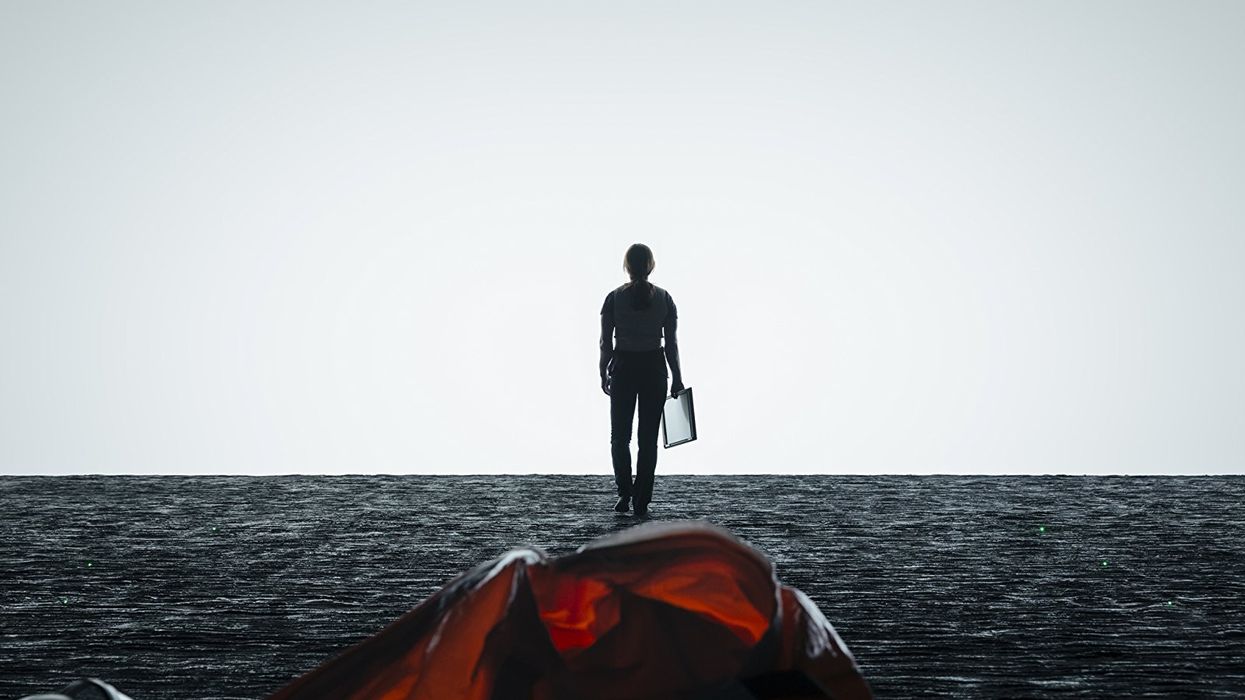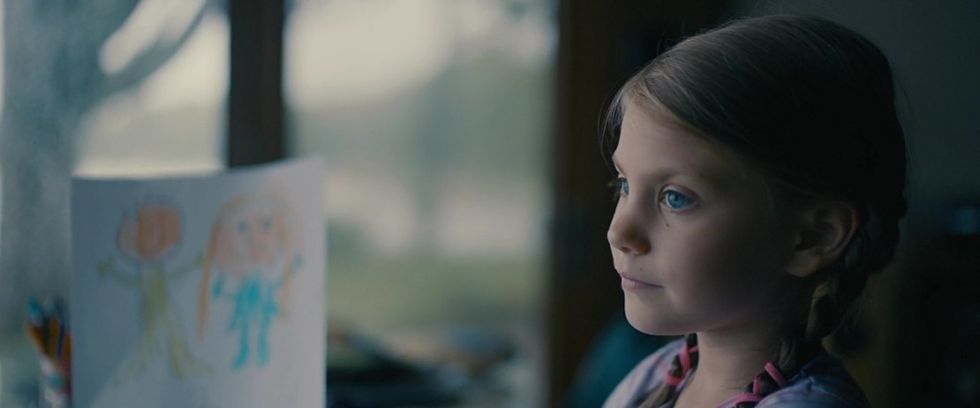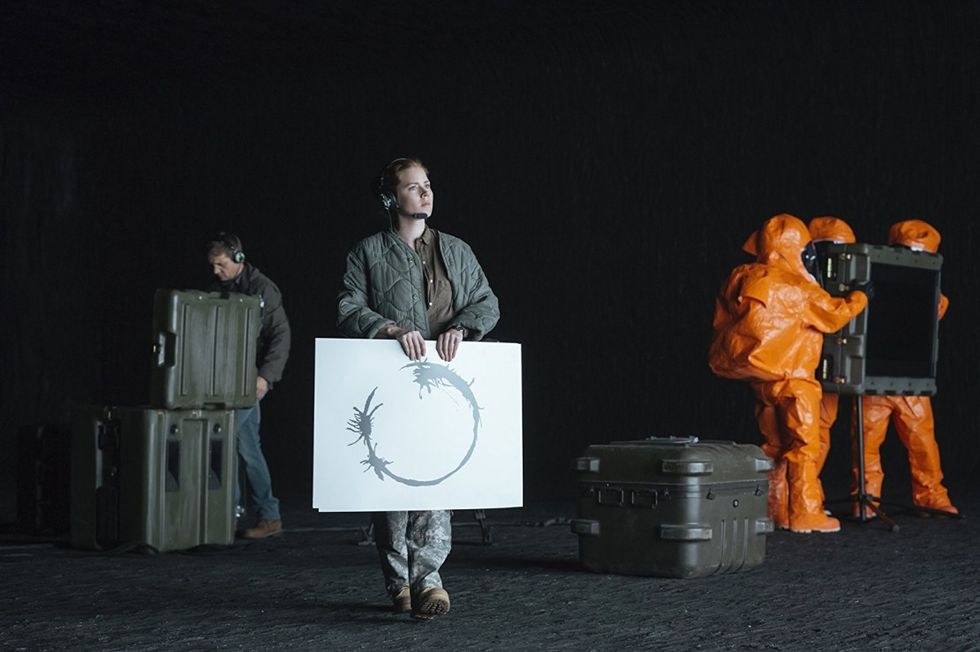Bringing It Full Circle: Discover the Craft and Emotional Journey of Writing 'Arrival'
Watch screenwriter Eric Heisserer break down his award-winning sci-fi screenplay on Austin Film Festival's 'On Story.'

Endings are beginnings and beginnings are endings. In recent memory, no other film takes this story axiom to the extreme quite like Arrival. Screenwriter Eric Heisserer spent years trying to turn Ted Chiang's short story Story of Your Life into a film. Maybe Heisserer persisted because he always knew the end of this story: The heart-wrenching mother-daughter story (told through the technical lens of communication with aliens) would become a box office success and lead to an Oscar nomination for Best Adapted Screenplay.
At the 2017 Austin Film Festival and Conference, I had the opportunity to talk to Heisserer at length for a Script-to-Screen panel about his process of writing Arrival. A condensed version of our panel conversation has just been released as an episode of On Story, which you can watch here, and below are three main takeaways for all screenwriters.

Choose your words carefully
In Chiang’s Story of Your Life, the verb tense shifts subtly within passages, sometimes within paragraphs. Only after reading the whole story do you notice how Chiang has manipulated time while being very consistent with how he is presented the concept of past, present and future from the protagonist Louise’s point of view.
In the opening voiceover of the film Arrival, Heisserer also chose his words for Louise’s voiceover very carefully, giving the viewer the sense that Louise has already suffered a terrible loss before the arrival of the heptapods. Heisserer explained that many producers wouldn’t have tolerated his argument for such specificity in language (or as he quipped during our conversation, “Calm down, Shakespeare!”). Fortunately, producers Dan Levy and Shawn Levine at 21 Laps understood the need for Heisserer to be very specific in his word choices in order to translate Chiang's short story into a compelling film.
"I wanted to tell the audience the entire story in the first few minutes, or the first couple of pages, at least the emotional part of it."
Know the story you are trying to tell
As Heisserer pointed out during our conversation, he really wanted to tell the emotional story of Louise and her daughter Hannah, and coming in contact with the heptapods just happened to be the way of getting there.
"I wanted to tell the audience the entire story in the first few minutes, or the first couple of pages, at least the emotional part of it," explained Heisserer. The entire emotional story is encapsulated in the opening sequence. Heisserer has cleverly told us exactly what is going to happen in this film, just without the heptapods. Each pivotal moment in the plot of the film turns on the mother-daughter story from the opening sequence because the breakthrough with the aliens and their heptapod language is not the point of the film—the emotional journey of Louise discovering her daughter Hannah is.

Find a common language with your collaborators
Before Denis Villeneuve officially attached himself to the project, he and Heisserer met for coffee and meals one-on-one, ostensibly to discuss the script, but invariably talking about other topics like geopolitics and religion. This long process of acquaintance, Heisserer explained, led to a deeper understanding of how he and Villeneuve would work together to bring the story to life, especially with very specific technical details to make the world as real as possible. "We learned about little details, [like] to make sure things kept from being irradiated, there would be a strange shower system for trucks and other vehicles, and Denis is like, 'I like this. I deeply love this...This is in the movie, Eric.'"
Finding a common language on the project for Heisserer extended to other creatives, like understanding how DP Bradford Young would bring a lyrical visual quality to moments with Hannah that would allow Heisserer to write less on the page; Young’s images would evoke the emotion the story needed.
What we see in the film of the computers deciphering the heptapod language is actually computers deciphering the heptapod language while we watch.
Heisserer even visualized a rough version of the heptapod visual language based on Chiang's description in the short story. During our conversation, Heisserer revealed that the final version of the heptapod's visual language was created by Martine Bertrand, the wife of production designer Patrice Vermette, and was then programmed into computers as a practical effect by Christopher Wolfram and his father Stephen during the shoot. This was done so that the screens could show translations of the language in real time. In other words, what we see in the film of the computers deciphering the heptapod language is actually computers deciphering the heptapod language while we watch.
Without finding a common language with all of these collaborators, Heisserer's vision of bringing Chiang's short story to the screen would never have happened.
Be sure to check out the full episode of On Story with Heisserer to learn more about how he translated Chiang’s virtually unadaptable short story into the much-discussed, award-winning sci-fi film.
Have you learned a lot about screenwriting from On Story? Then consider supporting the On Story Seed&Spark crowdfunding campaign to make more episodes of the TV series and podcast possible. Deadline to contribute is Thu. May 10!
Source: On Story











